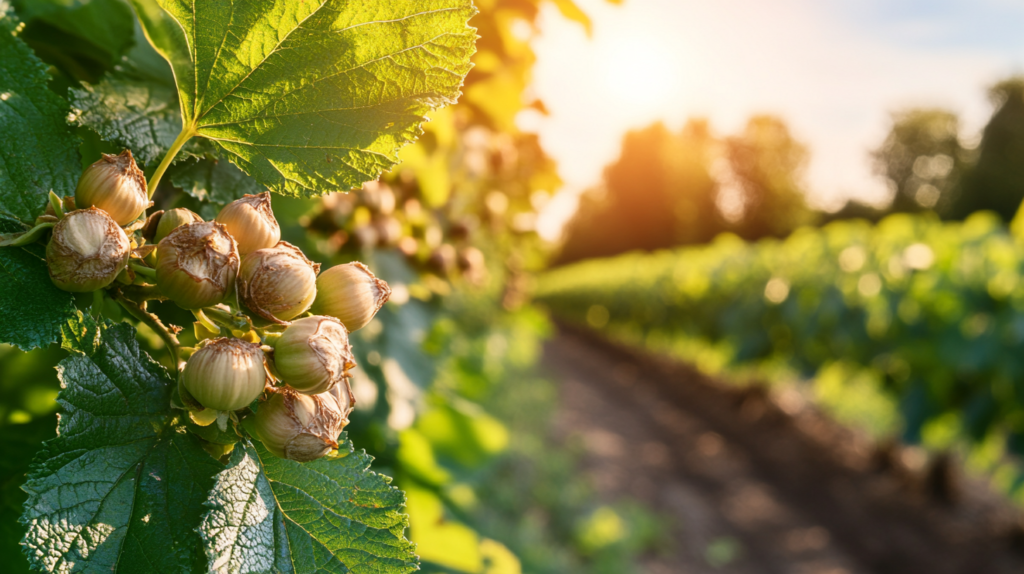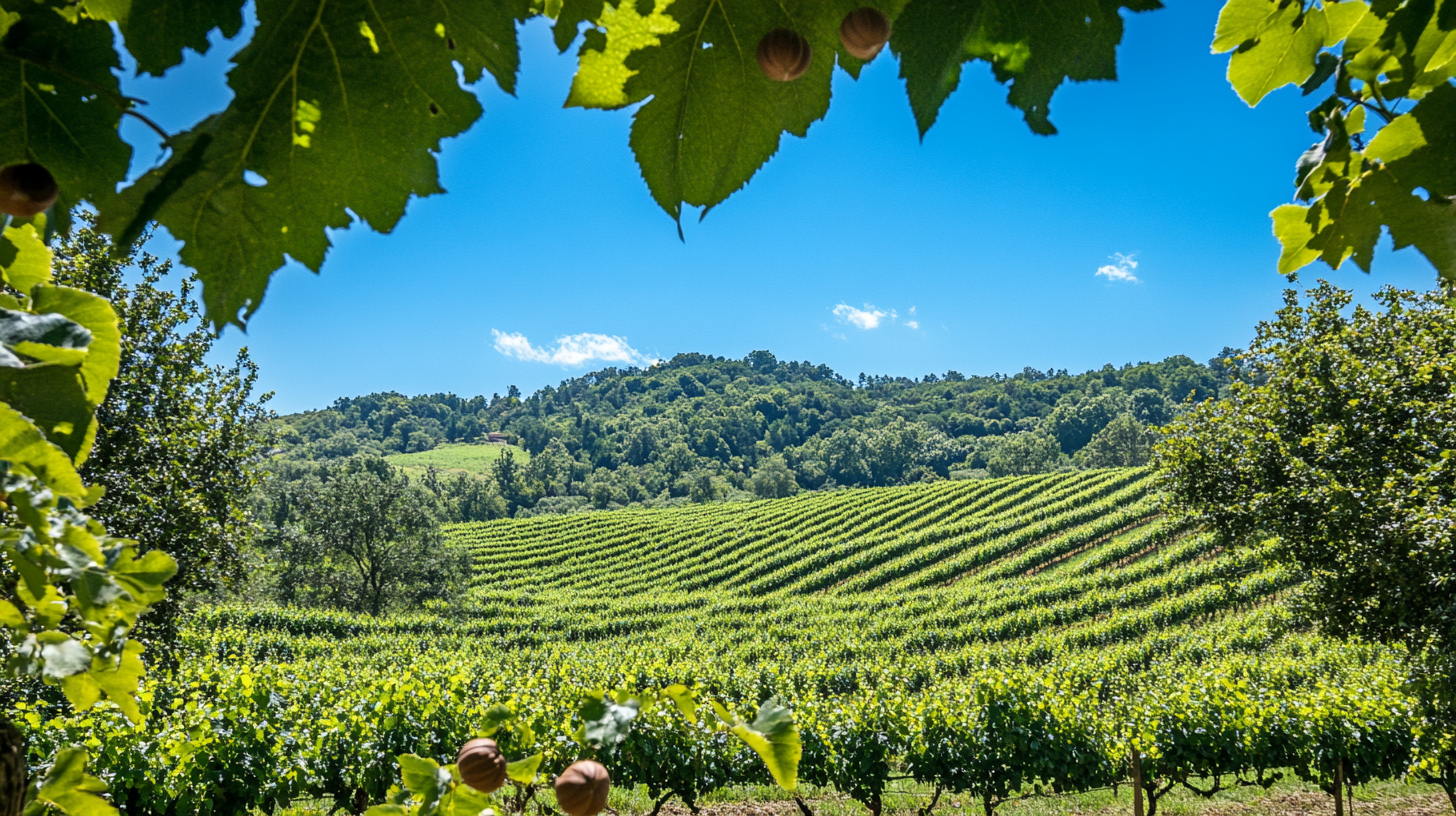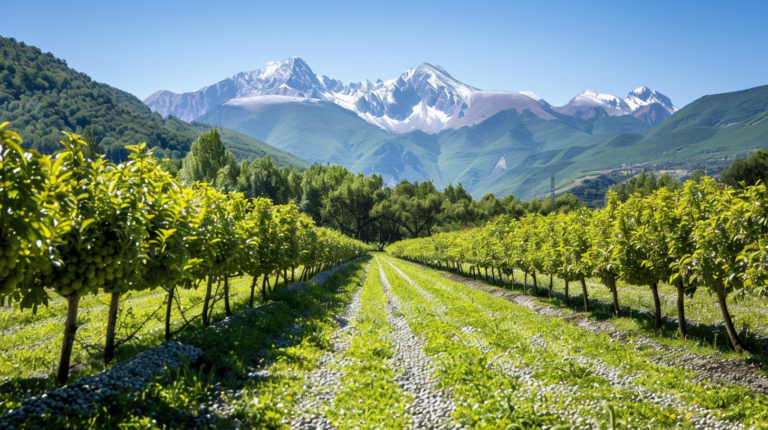Hazelnut Varieties in Carbon Farming: Sustainable Solutions for a Greener Future
Hazelnuts have emerged as a promising crop in the realm of sustainable agriculture and carbon farming initiatives. Their unique characteristics and growing practices offer significant environmental benefits, making them an attractive option for farmers looking to reduce their carbon footprint while maintaining profitable operations. This article explores the role of hazelnut varieties in carbon farming and sustainability initiatives, highlighting their environmental impact, agricultural potential, and the ongoing efforts to promote sustainable hazelnut production worldwide.
Environmental Benefits of Hazelnut Cultivation
Hazelnut trees possess several inherent qualities that make them environmentally beneficial crops, particularly in the context of carbon sequestration and sustainable land management.
Carbon Sequestration
One of the most significant environmental advantages of hazelnut cultivation is its potential for carbon sequestration. Hazelnut trees, like other perennial crops, have extensive root systems that help build and increase organic soil matter, effectively sequestering more carbon from the atmosphere each year compared to annual crops3. This characteristic makes hazelnut orchards effective carbon sinks, capturing more carbon dioxide than they release during production5.
The carbon sequestration potential of hazelnuts is further enhanced by their longer period of photosynthetic activity. Unlike annual crops, hazelnut trees maintain a full leaf canopy from early spring to late fall, allowing for extended periods of photosynthesis and carbon dioxide fixation3. This extended growing season contributes to higher annual carbon sequestration rates, potentially offering farmers better returns through carbon credit aggregation programs3.
Soil Conservation and Erosion Prevention
Hazelnut cultivation plays a crucial role in soil conservation and erosion prevention. As perennial crops, hazelnuts eliminate the need for yearly tillage, which helps preserve soil structure and organic matter. The permanent root structure of hazelnut trees is more efficient in preventing soil erosion and limiting excessive water runoff compared to annual crops5.
Moreover, hazelnuts provide complete soil cover for a longer period throughout the year. Even during dormant winter months, the vegetation and leaf litter protect the soil from erosion caused by raindrop splash and wind3. This characteristic makes hazelnuts particularly valuable for cultivation on sloping or marginal lands that may not be suitable for traditional annual crops3.
Water Management and Nitrogen Leaching
Hazelnut trees have relatively low water requirements, making them suitable for cultivation in regions with limited water resources1. Sustainable water management techniques, such as using sprinklers instead of flood irrigation, can further optimize water use in hazelnut orchards1.
Additionally, the extensive perennial root systems of hazelnut trees remain active throughout most of the year, reducing nitrogen leaching. This improved nutrient efficiency not only benefits the environment by reducing nitrogen pollution but also translates to reduced use of fossil fuels for fertilizer production and application3.

Hazelnut Varieties and Their Role in Sustainability
The choice of hazelnut varieties plays a crucial role in the success of sustainable farming practices and carbon sequestration efforts. Different varieties offer varying levels of disease resistance, yield potential, and adaptability to specific growing conditions.
EFB-Resistant Varieties
Eastern Filbert Blight (EFB) is a significant concern for hazelnut growers, particularly in organic farming systems. Varieties with high resistance to EFB are essential for sustainable production, as they reduce the need for chemical interventions and ensure long-term orchard health. Some notable EFB-resistant varieties include:
- Jefferson: Developed by Oregon State University, Jefferson combines very high EFB resistance with large nut size, good kernel quality, and high yields6.
- Yamhill: Another Oregon State University release, Yamhill offers excellent EFB resistance and is known for its high yield potential and kernel quality.
- McDonald: This variety exhibits strong EFB resistance and is well-suited for the confectionery market due to its round shape and good flavor.
Climate-Adapted Varieties
As climate change continues to impact agricultural regions worldwide, selecting hazelnut varieties adapted to specific climatic conditions becomes increasingly important. Some varieties are better suited to warmer climates, while others thrive in cooler regions. For example:
- Barcelona: A traditional variety well-adapted to the Pacific Northwest of the United States, known for its hardiness and consistent yields.
- Tonda di Giffoni: This Italian variety performs well in Mediterranean climates and is prized for its excellent kernel quality.
- Ennis: Suitable for milder climates, Ennis produces large, attractive nuts ideal for the in-shell market.
High-Yielding Varieties for Sustainable Production
Selecting high-yielding varieties is crucial for the economic viability of sustainable hazelnut production. Some varieties that combine good yield potential with desirable traits for sustainability include:
- Lewis: Known for its high yields and good kernel quality, Lewis is a popular choice for commercial orchards.
- Casina: This Spanish variety offers good yields and is well-suited for organic production due to its natural pest resistance.
- Clark: Developed for the kernel market, Clark produces high yields of small, well-filled nuts.
Sustainable Hazelnut Production Practices
To maximize the carbon farming and sustainability potential of hazelnut orchards, growers are adopting a range of environmentally friendly practices:
Good Agricultural Practices (GAP)
Implementing Good Agricultural Practices is essential for sustainable hazelnut production. These practices encompass various aspects of orchard management, including:
- Integrated pest management to reduce reliance on chemical pesticides
- Efficient irrigation systems to optimize water use
- Proper pruning techniques to enhance tree health and productivity
- Cover cropping to improve soil health and biodiversity
The adoption of GAP has led to significant yield increases in some regions. For example, in Azerbaijan, farmers who implemented GAP saw their yields increase from an average of 1.1-1.2 tonnes per hectare in 2021 to 1.7-1.8 tonnes per hectare in 20232.
Organic Farming Practices
Organic hazelnut production aligns closely with sustainability goals by eliminating synthetic pesticides and fertilizers. Organic growers focus on building soil health through composting, cover cropping, and natural pest control methods. While organic production can be more challenging, it often results in premium prices for the nuts and provides additional environmental benefits.
Renewable Energy Integration
Some hazelnut processing facilities are transitioning to renewable energy sources to reduce their carbon footprint. For instance, the first 100% solar-powered hazelnut processing plant was completed in 2017, setting a precedent for energy-efficient processing in the industry1.
Global Initiatives and Sustainability Programs
Several global initiatives and sustainability programs are driving the adoption of sustainable practices in the hazelnut industry:
The HAZER Project in Azerbaijan
The HAZER project, implemented by FAO in partnership with Azerbaijan’s Ministry of Agriculture, demonstrates how sustainable hazelnut production can improve livelihoods and food security while meeting food safety standards. The project focused on training smallholder farmers in Good Agricultural Practices, improving mechanization, and developing strategies for aflatoxin management2.
Oregon Hazelnut Stewardship Program
In Oregon, the leading hazelnut-producing state in the U.S., the Oregon Hazelnut Stewardship Program was established to promote sustainable practices and enhance the industry’s reputation. The program assesses various aspects of hazelnut farming, including pest management, nutrient management, soil conservation, and environmental protections4.
Ferrero’s Sustainability Initiatives
As a major player in the hazelnut industry, Ferrero has implemented several sustainability initiatives. These include establishing Agrifarms in countries like Chile to ensure year-round availability of sustainably grown hazelnuts and partnering with local universities to advance research in sustainable orchard management5.
Challenges and Future Directions
While hazelnuts offer significant potential for carbon farming and sustainability, several challenges need to be addressed:
- Climate change adaptation: Developing varieties that can withstand changing climate conditions will be crucial for long-term sustainability.
- Mechanization: Improving harvesting machinery for diverse terrain types will be necessary to expand sustainable hazelnut production to new areas.
- Market development: Expanding markets for sustainably produced hazelnuts will be essential to incentivize farmers to adopt environmentally friendly practices.
- Research and development: Continued investment in research is needed to improve disease resistance, yield potential, and sustainability metrics of hazelnut varieties.
- Policy support: Governments and international organizations should develop policies that support and incentivize sustainable hazelnut production and carbon farming initiatives.
Conclusion
Hazelnut varieties play a vital role in carbon farming and sustainability initiatives. Their inherent environmental benefits, combined with ongoing efforts to develop sustainable production practices and resilient varieties, position hazelnuts as a promising crop for the future of sustainable agriculture. As the industry continues to evolve, the integration of hazelnut orchards into carbon farming strategies and broader sustainability initiatives will likely expand, contributing to global efforts to mitigate climate change and promote environmentally responsible food production.
Sources:
[1] https://www.cardassilaris.com/news/sustainability-the-hazelnut-industry-what-is-being-done
[2] https://www.fao.org/sustainable-agricultural-mechanization/resources/news/detail-events/fr/c/1697081/
[3] https://www.arborday.org/programs/hazelnuts/consortium/agriculture.cfm
[4] https://ourimpact.oregonstate.edu/story/hazelnut-stewardship-initiative-highlights-oregons-sustainable-practices
[5] https://www.ferrerohazelnutcompany.com/int/en/our-hazelnuts/about-hazelnuts
[6] https://hazelnuthub.com/hazelnut-varieties-organic-farming/
[7] https://www.worldwildlife.org/magazine/issues/spring-2021/articles/hazelnuts-great-for-the-environment-but-vulnerable-to-climate-change
[8] https://www.ferrero.com/au/en/people-planet/source-our-ingredients-sustainably/hazelnuts
[9] https://www.wuwm.com/environment/2024-09-12/how-hazelnuts-can-build-climate-resilience-in-the-upper-midwest






